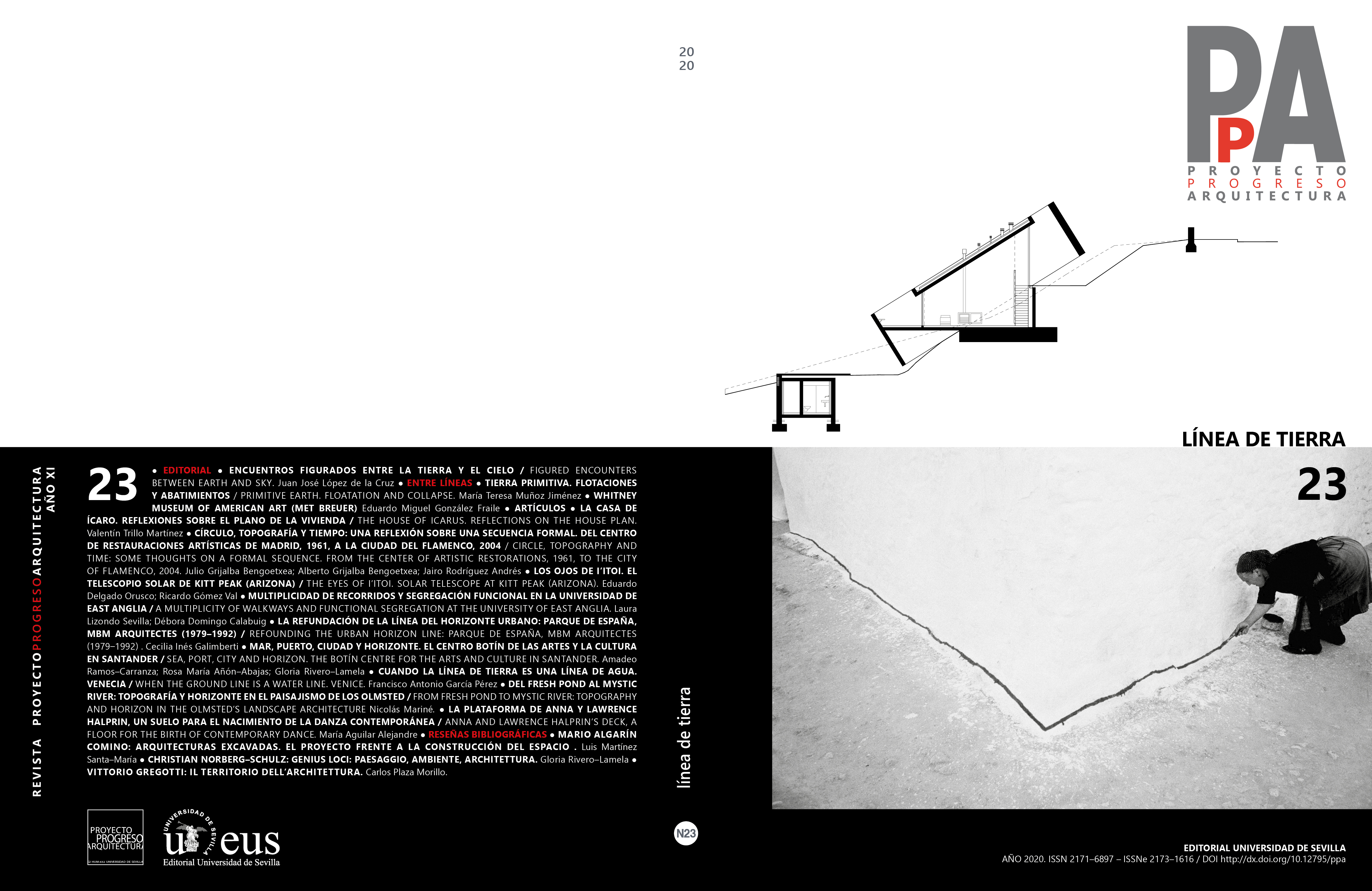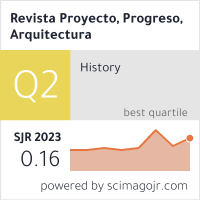PRIMITIVE EARTH. FLOATATION AND COLLAPSE
DOI:
https://doi.org/10.12795/ppa.2020.i23.01Keywords:
primitivismo, tierra, flotación, abatimiento, ritual, Jorge Oteiza, Claude Lévi-Strauss, Aldo van Eyck, Jørn UtzonAbstract
Since the end of the 19th century, some painters, such as the French Paul Gauguin or the German Max Pechstein, felt the need to physically move to the places where primitive people lived, attracted by the force of their art. Not content with observing the productions of these so-called “primitive” cultures in ethnographic museums, many artists of the European avant-garde of the 20th century embarked on a direct exploration of them, undertaking long journeys to share even their way of life. Primitivism was an essential ingredient in the formation of new avant-garde art and, in 1911, Wilhelm Worringer, a leading figure in the historiography of art, was unequivocal in his defence of it. In the 1940s, the sculptor Jorge Oteiza travelled to the Colombian Andes in search of an original statuary. The anthropologist Claude Lévi-Strauss published his most important works on the social structures of primitive cultures in the 1960s, and around the same time, the architect Aldo van Eyck travelled and later wrote about the Dogon people. All these authors refer to the myths developed in these cultures, which are directly related to the earth and to an eventual collapse of UE onto the earth. This essay addresses some of the ways in which this relationship between what floats up there and what happens on the surface of the ground is made concrete, a relationship of enormous importance for the architecture and art of our time.
Downloads
References
OTEIZA, Jorge de. Interpretación estética de la estatuaria megalítica americana. Madrid: Ediciones Cultura Hispánica, Colección Hombres e Ideas, 1952.
OTEIZA, Jorge de. Interpretación estética de la estatuaria megalítica americana. Edición crítica a cargo de María Teresa Muñoz. Navarra: Fundación Museo Jorge Oteiza, 2007.
LÉVI-STRAUSS, Claude. La Pensée sauvage. París: Librarie Plon, 1962. Edición española: El pensamiento salvaje. México: Fondo de Cultura Económica, 1964. Edición inglesa: The Savage Mind. Chicago Ill.: The University of Chicago Press, 1966.
VAN EYCK, Aldo. Un milagro de moderación. Con ensayos de Paul Parin y Fritz Morgenthaler. En: Charles JENCKS; George BAIRD, George. El significado en arquitectura (Meaning in Architecture). Traducción de María Teresa Muñoz. Madrid: Hermann Blume ediciones, 1975. (1.a ed. inglesa: Londres: Barrie and Rockliff, The Cresset Press, 1969).
BANHAM, Reyner. La arquitectura del Wampanoag. En: Charles JENCKS; George BAIRD, George. El significado en arquitectura (Meaning in Architecture). Traducción de María Teresa Muñoz. Madrid: Hermann Blume ediciones, 1975. (1.a ed. inglesa: Londres: Barrie and Rockliff, The Cresset Press, 1969).
UTZON, Jørn: Platforms and plateaus. En: Zodiac. Milán: Edizioni di Comunità, 1962, n.º 10, pp. 113-140. ISSN 0394-92301962.
WORRINGER, Wilhelm: The Historical Development of Modern Art. The Struggle for Art: The Answer to The Protest of German Artists. En: Der Sturm. Múnich, 1911, vol. 2, n.º 75. Citado en WASTON LONG, Rose-Carol, ed. German Expressionism. Berkeley-Los Ángeles: University of California Press, 1993.
Published
How to Cite
Issue
Section
License
Las ediciones impresa y electrónica de esta Revista son editadas por el Secretariado de Publicaciones de la Universidad de Sevilla, siendo necesario citar la procedencia en cualquier reproducción parcial o total.
Salvo indicación contraria, todos los contenidos de la edición electrónica se distribuyen bajo una licencia de uso y distribución “Creative Commons Atribución-NoComercial-SinDerivar 4.0 Internacional” ![]() . Puede consultar desde aquí la versión informativa y el texto legal de la licencia. Esta circunstancia ha de hacerse constar expresamente de esta forma cuando sea necesario.
. Puede consultar desde aquí la versión informativa y el texto legal de la licencia. Esta circunstancia ha de hacerse constar expresamente de esta forma cuando sea necesario.
Los autores/as que publiquen en esta revista aceptan las siguientes condiciones:
- Los autores/as conservan los derechos de autor y ceden a la revista el derecho de la primera publicación, con el trabajo registrado con la licencia de atribución de Creative Commons, que permite a terceros utilizar lo publicado siempre que mencionen la autoría del trabajo y a la primera publicación en esta revista.
- Los autores/as pueden realizar otros acuerdos contractuales independientes y adicionales para la distribución no exclusiva de la versión del artículo publicado en esta revista (p. ej., incluirlo en un repositorio institucional o publicarlo en un libro) siempre que indiquen claramente que el trabajo se publicó por primera vez en esta revista.
- Se permite y recomienda a los autores/as a publicar su trabajo en Internet (por ejemplo en páginas institucionales o personales) antes y durante el proceso de revisión y publicación, ya que puede conducir a intercambios productivos y a una mayor y más rápida difusión del trabajo publicado (vea The Effect of Open Access).









